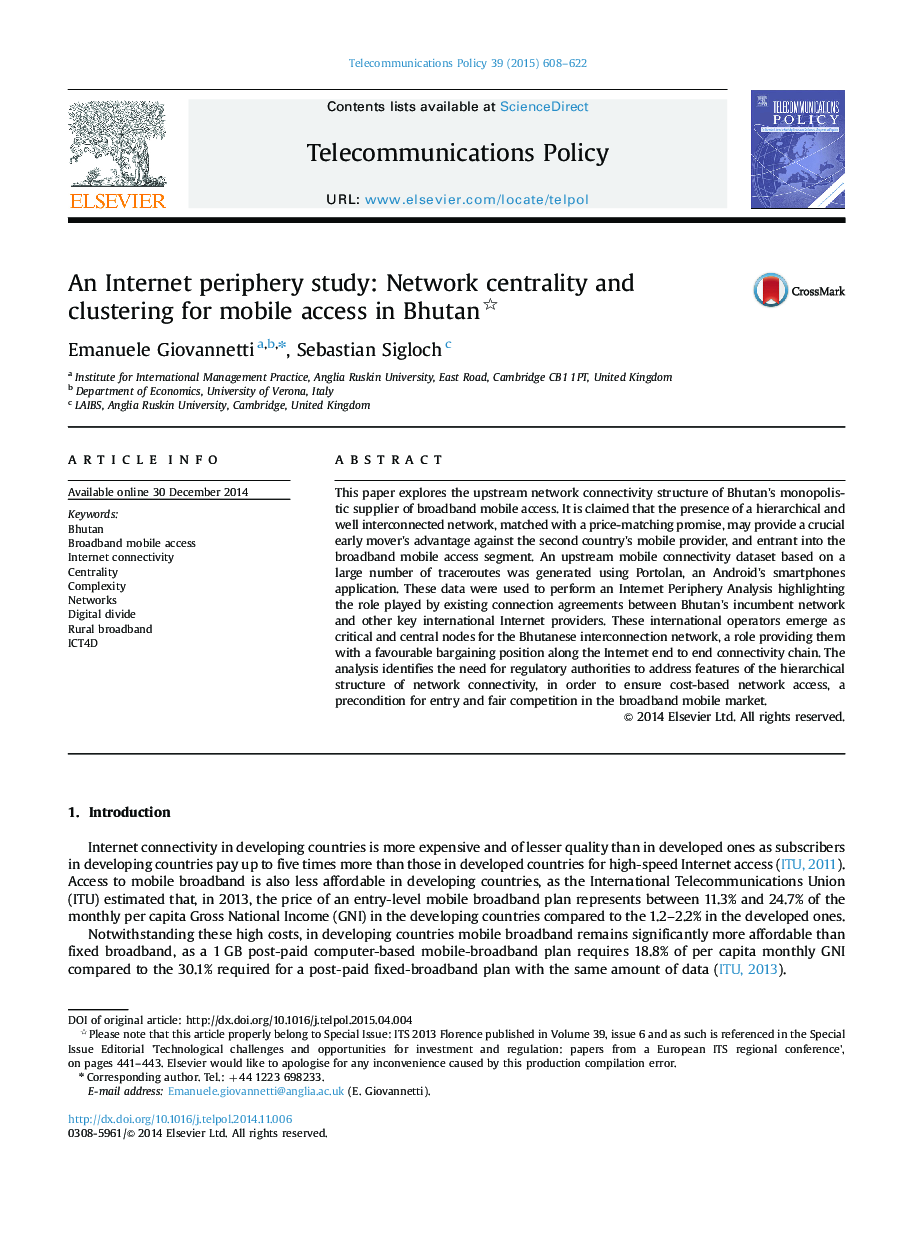| Article ID | Journal | Published Year | Pages | File Type |
|---|---|---|---|---|
| 556612 | Telecommunications Policy | 2015 | 15 Pages |
•This paper analyses the upstream connectivity for mobile Internet access in Bhutan.•An Internet Periphery view allows studying connectivity bottlenecks in rural areas.•The 3G incumbent connectivity is analysed just before the entrance of a competitor.•The Bhutanese Internet traffic relies on the centrality of international providers.•The emerged hierarchy features may prevent access to network under fair Conditions.
This paper explores the upstream network connectivity structure of Bhutan׳s monopolistic supplier of broadband mobile access. It is claimed that the presence of a hierarchical and well interconnected network, matched with a price-matching promise, may provide a crucial early mover׳s advantage against the second country׳s mobile provider, and entrant into the broadband mobile access segment. An upstream mobile connectivity dataset based on a large number of traceroutes was generated using Portolan, an Android׳s smartphones application. These data were used to perform an Internet Periphery Analysis highlighting the role played by existing connection agreements between Bhutan׳s incumbent network and other key international Internet providers. These international operators emerge as critical and central nodes for the Bhutanese interconnection network, a role providing them with a favourable bargaining position along the Internet end to end connectivity chain. The analysis identifies the need for regulatory authorities to address features of the hierarchical structure of network connectivity, in order to ensure cost-based network access, a precondition for entry and fair competition in the broadband mobile market.
